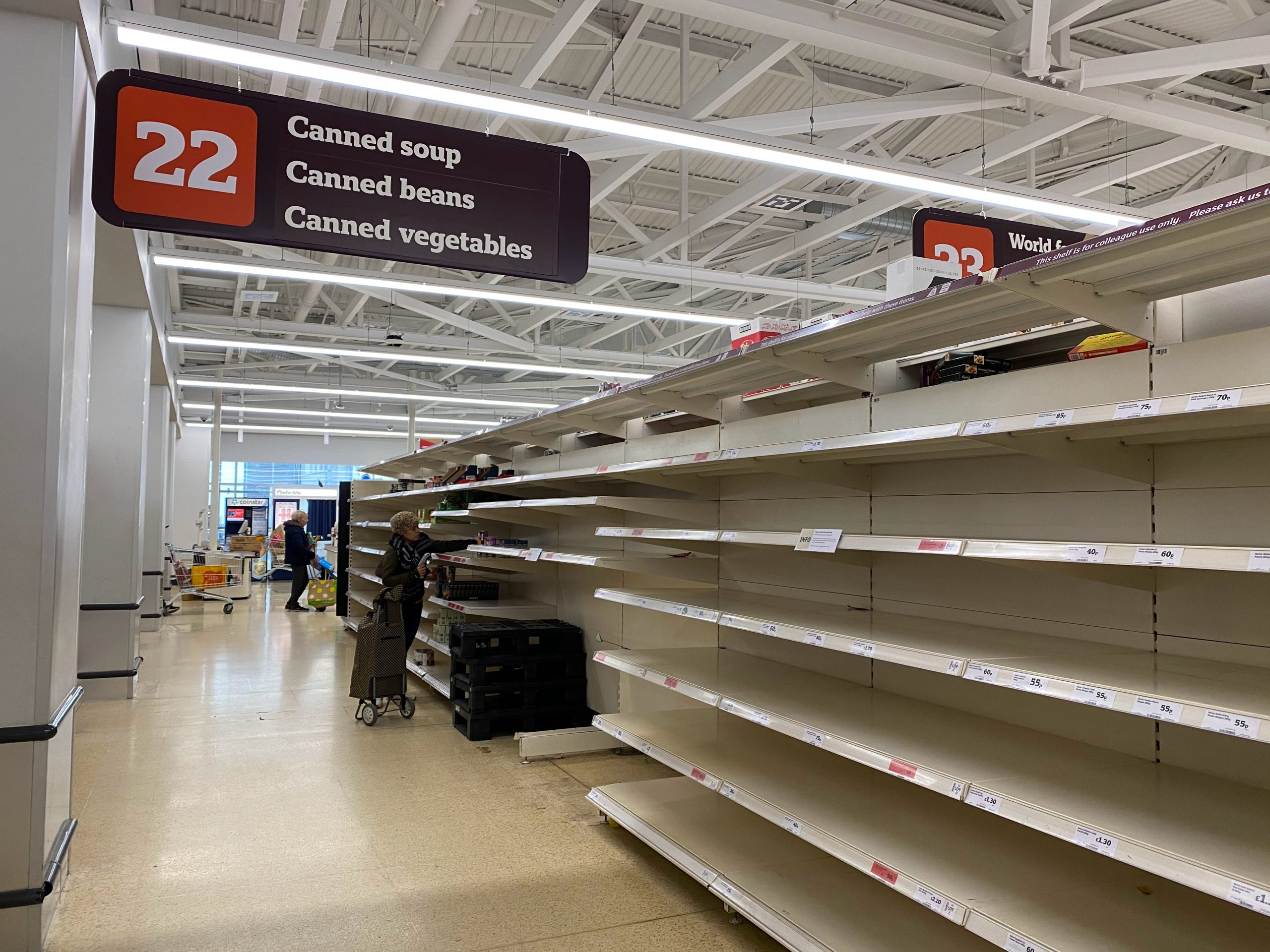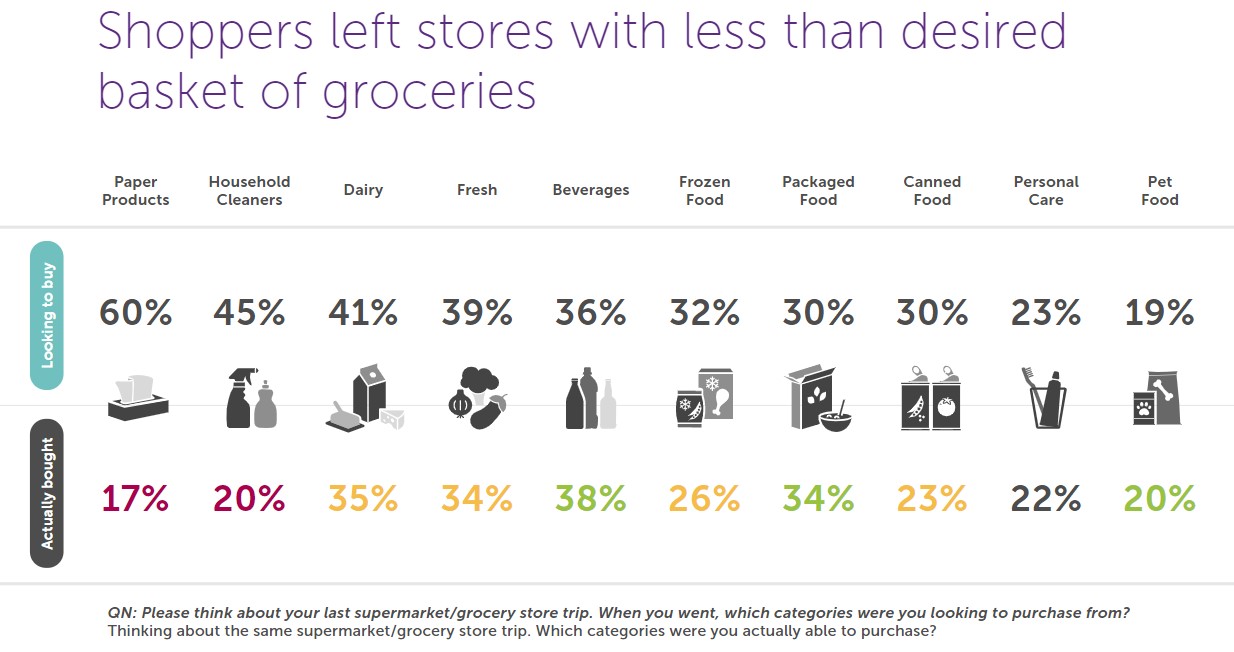As a result of the COVID-19 crisis, many consumer goods companies (CPGs) have been forced to rapidly shift from a growth mindset to one that’s bracing for a long-term recession. CPGs and retailers are facing a number of challenges: major disruption in the global economic environment, shifts in customer behavior, loss of revenue from on-premise channels, field-labor shortages, and supply-chain disruption. As such, CPGs are now putting solutions in place to help them adapt to this ‘new normal’ for at least another year, until mid-2021.
What are the key challenges facing CPGs today as a result of the COVID-19 crisis?

According to a recent Trax survey of 22 CPG clients in 14 countries, CPGs are most notably dealing with:
Continued unpredictability
Stock shortages and supply chain disruptions are top of mind. In the US, 40 percent of retailers expect to have inventory shortages while 44 percent expect production and supply-chain delays for the rest of the year. Only 6 percent of retailers say they do not expect major supply-chain disruptions.
Increase in e-Commerce volumes
Large-scale shutdowns due to social distancing norms have forced retailers and CPGs to pivot. Many have risen to the challenge by strengthening their digital channels and offering services such as curbside pickup, delivery and click-and-collect options.
With shoppers stuck at home, they have headed online for their grocery shopping. As a result, e-commerce marketplaces that had previously struggled with fresh foods and packaged goods are now building momentum. Amazon’s online grocery sales tripled in the second quarter of 2020 as a result of consumer behavior brought about by the coronavirus pandemic.
CPG industry leaders are saying these changes to channel strategies will likely be permanent. According to the Trax survey. CPG leaders estimate that up to 30 percent of on-premise channels and up to 75 percent of non-retail channels are predicted to remain closed after the pandemic is over.
Changing consumer behavior
Customer brand loyalty is plummeting as a result of the sense of scarcity caused by widespread empty shelves, causing significant changes in consumer behavior. In March, Trax surveyed hundreds of shoppers and found that four in 10 consumers would rather visit multiple retailers on the same trip to secure their desired products if those products were not available when they visited the first retail store. The reason? The perceived risk that the products might not be available on the next trip if they were to wait and return.

This level of unpredictability means it’s difficult for CPG companies to plan for the long term. Instead, retailers and CPGs are focusing on new priorities, such as keeping shelves stocked, monitoring shifts in buying behavior, and adjusting their operations accordingly.
How can CPGs best manage in this volatile environment?

Getting products back on shelves and maintaining consistent availability is critical for both brands and consumers. Here are three ways in which CPGs are managing the new COVID reality:
In an environment where out-of-stocks (OOS) are seen with increased frequency, CPGs are prioritizing availability of core products on the shelf in the short term.
Companies like Coca-Cola are focusing on understanding and maintaining availability with a core range of products. Regaining shelf-share they previously held on primary shelves, displays and secondary placements, and restoring merchandising standards and trade agreements with retailers are also renewed priorities.
James Quincey, CEO of The Coca-Cola Company, said in an investor call in April that Coca-Cola hopes this will result in increased share of displays of stock on the floor, aided by a “ruthless” prioritization of core products.
“We’re also taking this opportunity to reshape our innovation pipeline to eliminate a longer tail of smaller projects and allocate resources to fewer, larger, more scalable, and more relevant solutions for this environment,” Quincey added.
With a certain amount of social-distancing measures expected to remain in place for the long haul, CPG companies are looking to new, adaptable ways of enabling their field teams.
Some companies are leveraging Computer Vision solutions to equip sales reps sitting in remote call centers with real-time shelf reality. By remotely viewing shelves in-store to understand product availability, sales reps can have relevant cross-sell and up-sell discussions with customers.
CPGs are also taking this opportunity to evaluate their ROI on retail labor and syndicated coverage provided by traditional merchandising agencies. The appetite is growing for smart, tech-driven merchandising services that help them do the right work, at the right store, at the right time in a more sustainable and easily scalable manner.
As the economic recession takes hold, consumers are expected to shift towards value and discount channels—increasingly seeking deals and distinguishing products by price over brand. With pricing dynamics playing a crucial role in a recession and recovery period, Trax customers are looking at how technology can help them track and analyze real-time pricing to enable more proactive price management for the coming months.
How Trax can help
The timeline for recovery from the COVID-19 crisis is unknown, but even if your market is blessed with the hoped-for ‘V’-shaped recovery, consumer behavior can be unpredictable.
Trax can equip retailers and CPGs to rise to the challenge by:
Download Trax’s report, The new imperative at shelf for consumer goods companies, to see how you can get started with Trax.
Give us some info so the right person can get back to you.